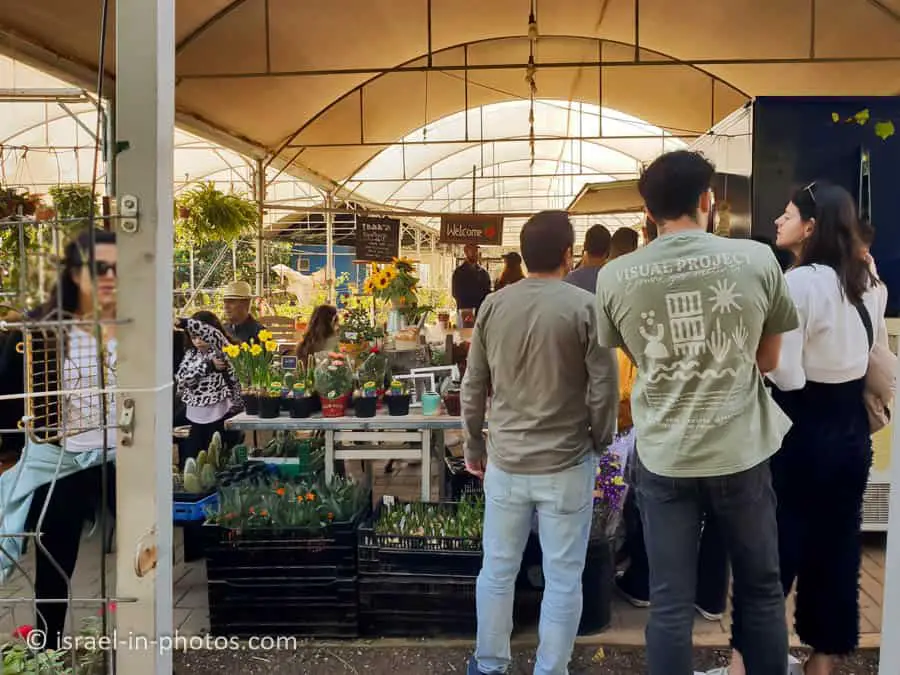Bitan Aharon Nature Reserve – Visitors Guide
Bitan Aharon Nature Reserve is a lovely place for a short hike near Netanya. It is trendy in winter and spring when flowers bloom.
Table of Contents
Map
Bitan Aharon Nature Reserve is located east of Bitan Aharon and not far from Netanya. And the easiest way to reach it is by entering its name into Waze.
Directions for drivers: Link to Waze and Link to Google Maps
Directions for public transport: Link to Moovit
Interactive map of the area:
Parking
There is free parking near Beit ha-Rishonim. If it is full, people park along road #5710.

Opening Hours
Always open. But remaining after dark in the reserve is prohibited.
Entrance Fee
Free.
Restrooms
None.
Is this nature reserve hike suitable for families?
This is a small reserve. The loop trail is short (about 1 km) and suitable for families. However, the trail is not suitable for baby strollers.
What is the best season to visit Bitan Aharon Nature Reserve?
Like many nature reserves, it is best visited during winter and spring. Towards the end of the winter, many flowers start to bloom. Also, there is little shade on the trail. Thus, if you visit on a hot sunny day, bring hats and prefer a morning or afternoon visit.
Beit ha-Rishonim
From the parking lot, you will see Beit ha-Rishonim. If you take the stairs, you will reach it. Also, the beginning of the trail is near it.







Beit ha-Rishonim, known as the “Big House”, sits on the Kurkar Ridge and overlooks the entire valley. The importance of its preservation stems from its fascinating story, which is the story of the redemption of Emek Hefer.
The house was built in the 19th century by a Christian Arab from Lebanon, and until the 1930s, it was used by the tenant farmers who worked on its land. The house and the land around it were purchased by KKL-Junk, with the help of donations from Canadian Jews, and in January 1930, twenty young men settled in the house. Those twenty people were the first settlers in Emek Hefer, who later founded the village of Vitkin.
Later, courses for Haganah commanders were held in the “Big House”.
Adjacent to Beit Rishonim to the north is the Beitan Aharon nature reserve, which preserves the characteristic vegetation of the Kurkar Ridge in Sharon, and there are ancient burial caves carved into the Kurkar Ridge.
Source: Hefer Tourism
Rami Cohen Viewpoint
Near Beit ha-Rishonim, you can find Rami Cohen Viewpoint.


Rami was born in Kfar Vitkin in 1958. He was the son and grandson of the first settlers in Hefer Valley. He fell in the Shelom Ha-Galil operation in 1982 in Lebanon.
Bitan Aharon Nature Reserve
To your north, you can see the beginning of the trail. Below, you can find several photos from our latest visit:


This reserve, in the heart of the Sharon Plain, preserves the middle kurkar (calcareous sandstone) ridge. This Kurkar ridge is geologically and botanically unique. It features batha vegetation, including hairy bread-grass (Hyparrhenia hirta) and headed thyme (Coridothymus capitatus), alongside African fleabane (Phagnalon rupestre) and cat-thyme germander (Teucrium capitatum). Numerous species of geophytes (bulbs and tubers) thrive in the reserve, among them small-flowered pancratium (Pancratium parviflorum), Persian cyclamen (Cyclamen persicum), hyacinth squill (Scilla hyacinthoides) and common asphodel (Asphodelus ramosus). A single Mt. Tabor oak grows on the hill, a remnant of the oak forest once typical of the Sharon Plain. Nearby is a carob tree and a few lentisk shrubs.
In the eastern part of the reserve are ancient burial caves, which are roosting sites for Fruit bats and hiding places for the red fox and the golden jackal, which are common in this region.
Source: sign
The sign also lists several rules. Here are some of them:
- Vehicles, including bicycles, are prohibited.
- Dogs and horses are prohibited.
- Do not light fires (including campfires and barbeques).








After about twenty minutes of strolling, we reached the burial cave. But since fruit bats use the caves, entrance is forbidden.





While walking on the trail, we saw many people to the east. So, after returning to the car, we drove around the ridge to see what was there.
The first place was a farm that offered self-picking of raspberries. But this activity has not been available since we visited in January (not the season for raspberries). There was a small coffee shop on site.


The second place was fully active. They offered self-picking several types of oranges and clementines.


Summary
The visit to Beit ha-Rishonim and the nearby loop trail at the nature reserve took us less than an hour. Moreover, the trail is easy and not far from the center (meaning a short drive). Thus, it is an ideal place for a short family hike with small children. Also, I saw many people bringing food and having a picnic in reserve.
Have you ever been to Bitan Aharon Nature Reserve? Tell us about your experience in the comments below.
That’s all for today, and I’ll see you on future trips!
Stay Tuned!
Additional Resources
Here are several resources that I created to help travelers:- Trip Planner with Attractions and Itineraries is the page that will help you create your perfect travel route.
- What is the Best Time to visit Israel? To answer this question, we will consider the weather, prices, holidays, festivals, and more.
- Information and Tips for Tourists to Israel will answer the most common questions tourists have about Israel (including safety, passports, weather, currency, tipping, electricity, and much more).
- Israel National Parks and Nature Reserves include a complete list, top ten, map, tickets (Israel Pass, Matmon, combo), and campsites.
- If you are looking for things to do, here are the pages for Jerusalem, Tel Aviv, Haifa, Sea Of Galilee, Akko (Acre), Eilat, Nazareth, Safed (Tzfat), and Makhtesh Ramon.






